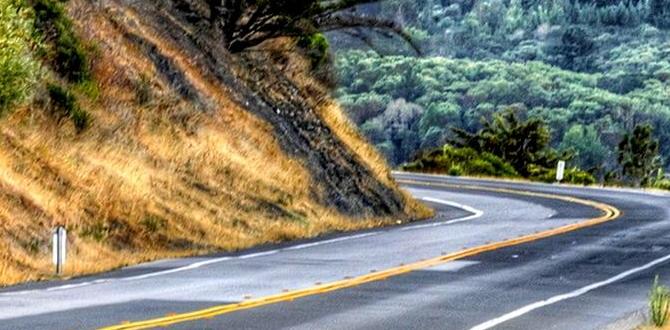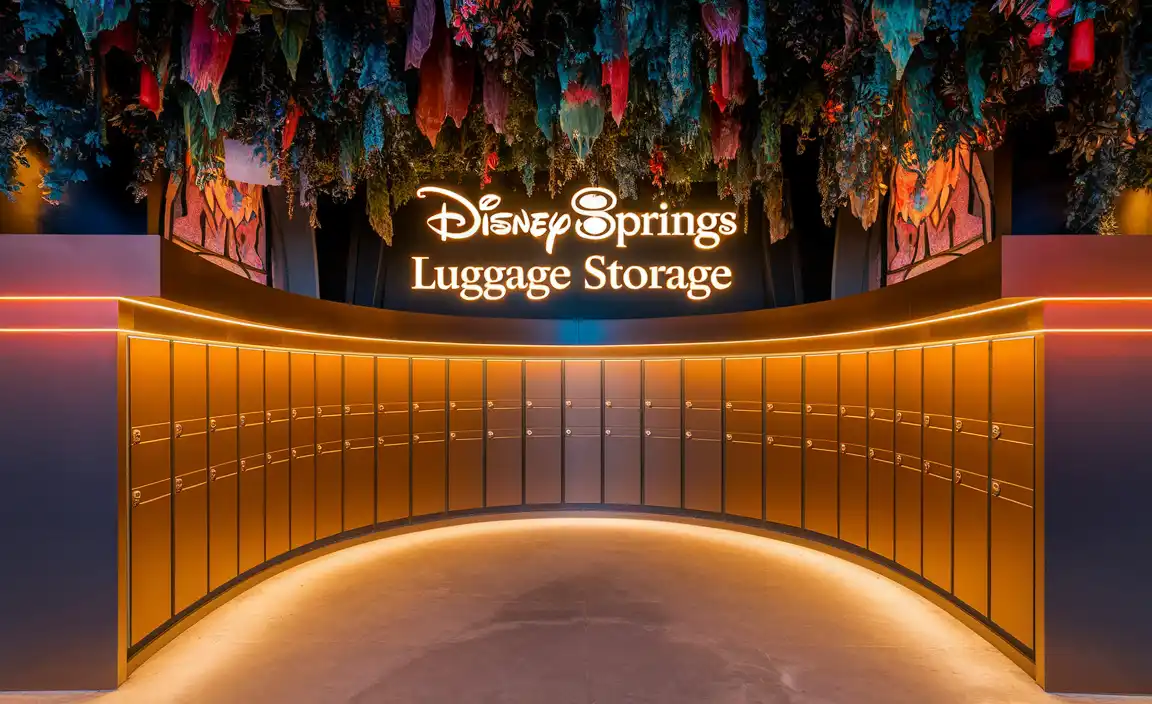Black Forest food neighborhoods are distinct culinary zones within the Black Forest region of Germany, each offering unique local specialties based on geography, history, and available ingredients. Understanding these areas helps travelers savor authentic regional flavors and discover hidden culinary gems. This guide breaks down the delicious diversity for a truly flavorful journey.
The Black Forest, a mountainous and forested region in southwestern Germany, is renowned for its breathtaking scenery and, importantly, its delicious food. But did you know that the culinary landscape isn’t just one big plate of cake? It’s actually a tapestry woven from different “food neighborhoods,” each with its own flavor profile shaped by history and local bounty. Navigating this can sometimes feel a bit overwhelming, especially if you’re eager to taste the real Black Forest. That’s where this guide comes in! We’ll walk you through the distinct food regions, making it super simple to plan your delicious adventure. Prepare to uncover the secrets behind every savory bite and sweet treat!
Understanding Black Forest Food Neighborhoods: A Culinary Map
Think of the Black Forest not just as trees and trails, but as a collection of villages and towns, each with a slightly different culinary story to tell. These “food neighborhoods” are influenced by factors like altitude, the types of farms that thrive there, historical trade routes, and even special events. For instance, areas closer to the Rhine might have different ingredients available than those nestled deep in the mountains. This diversity is what makes exploring the Black Forest’s food scene so exciting!
Why Differentiate Food Neighborhoods?
It’s all about authenticity and delicious discovery! By understanding the variations, you can target specific dishes and experiences. Instead of just hoping to stumble upon great food, you can actively seek out the specialties that define each area. This means you get a richer, more nuanced appreciation of Black Forest cuisine, moving beyond the well-known Black Forest gâteau to explore a whole world of flavors.
The Core Black Forest Food Neighborhoods and Their Flavors
Let’s dive into the main culinary zones. While there can be overlap, these categories give you a great starting point for your edible exploration.
1. The High Forest (Schwarzwaldhochland)
This is the heart of the Black Forest, the high plateau and mountain peaks. It’s characterized by its more challenging agriculture and reliance on what can be grown and raised in cooler climates and on steeper slopes.
Key Ingredients: Dairy products (milk, cheese, butter), potatoes, game (deer, boar), local berries (mulberries, raspberries, blueberries), herbs, and hearty grains.
Signature Dishes:
Schwarzwälder Kirschtorte (Black Forest Gâteau): While famously found everywhere, its true home is here. The perfect version uses locally sourced cherries and high-qualitykirschwasser (cherry brandy).
Schwarzwälder Schinken (Black Forest Ham): This iconic cured ham is a must-try. What makes it special is the traditional smoking process over fir and pine wood, giving it a distinctive aroma and flavor. Regulations even protect its origin, and you can learn more about its Protected Geographical Indication status on the European Commission’s official database.
Wildgerichte (Game Dishes): Venison and wild boar stews or roasts, often served with potato dumplings and a rich sauce.
Bratkartoffeln (Fried Potatoes): Simple, yet incredibly satisfying, especially when made with local potatoes and often served with bacon and onions, or a fried egg.
Heidelbeer-Milchsuppe (Blueberry Milk Soup): A comforting dessert or breakfast, often made from fresh forest blueberries.
2. The Valley Floors and Foothills (Täler und Vorgebirge)
As you descend from the highest peaks, the land becomes more fertile, supporting a wider variety of farming. These areas often benefit from a slightly milder climate and are more accessible for trade.
Key Ingredients: A broader range of vegetables (carrots, leeks, cabbage), fruits (apples, pears), more varied dairy products, pork, beef, and freshwater fish from rivers.
Signature Dishes:
Maultaschen (Swabian Ravioli): Though originating from Swabia, these filled pasta pockets are popular here. They can be served in broth, fried, or as a main dish with caramelized onions.
Sauerbraten: A classic German dish of marinated roast beef, often made with local beef and served with a rich gravy and red cabbage.
Forelle Müllerin Art (Trout, Miller’s Wife Style): Fresh trout from the region’s streams, pan-fried in butter and served with lemon and parsley.
Kartoffelpuffer (Potato Pancakes): Crispy, golden pancakes made from grated potatoes, served with applesauce or even savory toppings.
Käsespätzle: Soft egg noodles mixed with cheese, often topped with crispy fried onions – a hearty vegetarian option.
3. The Tri-Border Region (Dreiländereck)
The Black Forest borders France and Switzerland, and this proximity significantly influences the food culture in the areas where these borders meet. You’ll find a delicious melting pot of influences.
Key Ingredients: French and Swiss cheeses, wine, influences from Alsace (like choucroute) and Switzerland (like Rösti).
Signature Dishes:
Besondere Brot & Käse (Special Breads & Cheeses): Expect a higher quality and variety of artisanal breads and regional cheeses, influenced by both French baking traditions and Swiss cheesemaking.
Flammkuchen (Tarte Flambée): A very thin Alsatian-style pizza-like dish with cream, onions, and bacon.
Elsässer Spezialitäten (Alsatian Specialties): Dishes like choucroute garnie (sauerkraut with various meats) can be found in areas closer to the French border.
Schweizer Rösti: A Swiss potato dish, similar to a large, thick potato pancake.
Wurstsalat (Sausage Salad): A refreshing salad often made with Lyoner sausage, onions, pickles, and a vinaigrette.
Planning Your Culinary Tour of the Black Forest
To make the most of your food journey, consider which neighborhoods appeal to you most. Are you a dedicated carnivore looking for game and ham? Or perhaps a dessert aficionado dreaming of the perfect Kirschtorte?
Step-by-Step Guide to Culinary Exploration
1. Identify Your Culinary Interests: What kind of Black Forest food excites you the most? Think about the signature dishes and ingredients mentioned above.
2. Map Your Route: Based on your interests, plan a route that takes you through specific food neighborhoods. For example, if game and ham are your priority, focus on the High Forest. If you want variety, a route combining valleys and higher altitudes might work best.
3. Research Local Eateries: Look for Gasthöfe (traditional inns), Bauernstuben (farmhouse restaurants), and local bakeries. Websites like the official Black Forest tourism site often have recommendations.
Official Black Forest Tourism: For inspiration and guided tours, visit blackforest-tourism.com.
4. Embrace Local Markets: Visit weekly markets to sample local produce, cheeses, and treats. This is a fantastic way to interact with producers and taste things at their freshest.
5. Consider Special Food Tours or Events: Some towns and regions offer guided food walks or have seasonal festivals celebrating local produce (e.g., cherry festivals, game weeks).
6. Don’t Be Afraid to Ask: Locals are often happy to share their favorite dishes and places. Asking your hotel or a shopkeeper for a recommendation can lead to delightful discoveries.
Black Forest Food Neighborhoods: Specialty Spotlight
Let’s dive a bit deeper into some specific towns and what they are known for.
Areas Renowned for Schwarzwälder Kirschtorte
While you can find this iconic cake almost anywhere, some places take extra pride in their traditional preparation.
Triberg: Often cited as the birthplace or at least a major historical center for the cake, Triberg has numerous cafes and konditoreien (pastry shops) showcasing their versions.
Furtwangen: Another town in the heart of the High Forest, known for its traditional bakeries.
Schonach: Small villages like Schonach also contribute to the authentic Kirschtorte tradition.
Regions for Schwarzwälder Schinken
The production of this famous ham is concentrated in specific areas due to the availability of traditional smoking facilities and the specific microclimate needed for curing.
Gutachtal (Gutach Valley): This valley is a significant region for Schinken production and is home to the Schwarzwälder Schinken Museum, offering a fascinating look into its history and making process. You can learn more about the production and protected status from sources like the Schwarzwald Schinken Museum.
Villages along the Kinzig and Murg Rivers: Many smaller villages in these valleys have families that have been producing Schinken for generations.
Areas for Fresh Game and Forest Produce
Higher altitude villages and those surrounded by extensive forests are the best places to seek out game and berries.
Baiersbronn: Known for its high-quality restaurants and proximity to excellent hunting grounds and forests.
Titisee-Neustadt and Feldberg Area: These popular tourist spots are surrounded by the Black Forest and offer opportunities to try game specialties and dishes featuring local berries.
Schluchsee: Similar to Titisee, this area provides access to forest bounty.
Essential Gear for Your Culinary Adventure
While good walking shoes are key for exploring, a few other essentials can enhance your Black Forest food journey, especially if you’re traveling with family or need specific comfort items.
Comfortable Backpack: For carrying snacks, water, souvenirs, and any necessities. For parents, a good child diaper backpack is invaluable for day trips.
Reusable Water Bottle: Staying hydrated is crucial, and you can refill it at many fountains or accommodations.
Camera: To capture those delicious dishes and scenic views!
Compact Travel Guide or App: For quick reference on local dishes and restaurants.
Portable High Chair/Booster Seat (if traveling with young children): Some smaller, traditional eateries might not have them.
Adult Diapers or Child Diapers: For long travel days, excursions, or unexpected stops, having reliable adult diapers or child diapers provides peace of mind and comfort, ensuring your focus remains on enjoying the experience rather than worrying about accessibility. Journey Essentials offers practical options for stress-free travel.
Comparing Food Neighborhood Characteristics
To help you visualize the differences, here’s a table comparing key aspects:
| Feature | High Forest (Schwarzwaldhochland) | Valley Floors & Foothills (Täler & Vorgebirge) | Tri-Border Region (Dreiländereck) |
| :—————— | :———————————————- | :——————————————— | :——————————————————- |
| Dominant Produce| Dairy, Potatoes, Game, Berries, Herbs | Wider variety of Veggies, Fruits, Fish | Influenced by French & Swiss crops, wines, cheeses |
| Iconic Dishes | Kirschtorte, Schwarzwälder Schinken, Wildgame | Maultaschen, Sauerbraten, Trout, Spätzle | Flammküchen, Wurstsalat, Regional Breads & Cheeses |
| Agricultural Style| Hardy crops, mountain pastures, traditional farms | More fertile land, diverse farming | Mix of German, French, and Swiss agricultural methods |
| Atmosphere | Rustic, hearty, traditional | Diverse, from agricultural to slightly more urban | Cosmopolitan, influenced by neighboring cultures |
| Best For | Traditionalists, meat lovers, Kirschtorte fans | Variety seekers, families, those preferring fish | Those who enjoy cultural fusion, diverse cheese & bread |
Frequently Asked Questions (FAQ)
Q1: What is the most famous food from the Black Forest?
A1: The most internationally famous food is the Schwarzwälder Kirschtorte, or Black Forest Gâteau. However, Schwarzwälder Schinken (Black Forest Ham) is also incredibly iconic and deeply rooted in the region’s culinary heritage.
Q2: Are the food neighborhoods very distinct, or is there a lot of overlap?
A2: While there’s overlap, particularly in tourist-heavy areas, the core characteristics of each neighborhood are quite distinct. You’ll find that traditional dishes and ingredients are more readily available and authentically prepared in their respective regions.
Q3: Where can I find the most authentic Schwarzwälder Kirschtorte?
A3: Look for small, family-run bakeries (Konditoreien) in the High Forest region, particularly in towns like Triberg, Furtwangen, and Schonach. Authentic versions use local cherries and high-quality Kirschwasser (cherry brandy).
Q4: Besides cake and ham, what other Black Forest foods should I try?
A4: Definitely sample local mushroom dishes (especially in autumn), wild game like venison and boar, fresh trout from mountain streams, hearty potato dishes like Bratkartoffeln and Kartoffelpuffer, and regional cheeses. Don’t forget local berry desserts!
Q5: Is it expensive to eat in the Black Forest?
A5: Prices can vary. Traditional inns (Gasthöfe) and bakeries often offer good value for money. Higher-end restaurants, especially those with Michelin stars (the Black Forest has several!), will be more expensive. Eating at local markets is also a more budget-friendly option.
Q6: I’m traveling with young children. Are there kid-friendly food options?
A6: Absolutely! Most restaurants offer simpler dishes like Schnitzel, portions of roasted chicken, or pasta. Potato pancakes, fruit soups, and even plain bread and cheese are usually well-received by children. Always check menus or ask the staff.
Q7: How can I learn to cook Black Forest dishes myself?
A7: Many hotels and tourist centers offer cooking classes. Additionally, you can find excellent Black Forest cookbooks online or in local shops, and there are many reputable culinary websites that share authentic recipes. You can find resources on German cooking traditions from official German tourism sites.
Conclusion
Exploring the Black Forest’s culinary landscape is a journey of discovery, one delicious neighborhood at a time. From the hearty game and rich dairy of the high mountains to the freshwater delicacies of the valleys and the cultural fusion near the borders, each region offers a unique taste of this enchanting German corner. By understanding these food neighborhoods, you’re not just planning a trip; you’re crafting an unforgettable gastronomic adventure. So, pack your appetite, your comfortable shoes, and perhaps some travel-friendly essentials for peace of mind, and get ready to savor the authentic flavors that make the Black Forest a true feast for the senses. Guten Appetit!







